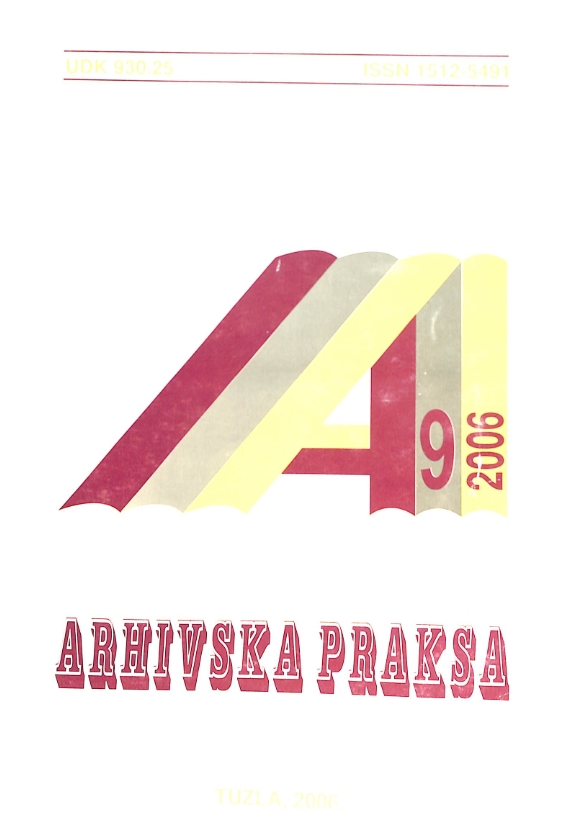ARHIVSKI FONDOVI I ZBIRKE CRNE GORE KAO IZVOR ZA PROUČAVANJE INSTITUCIJA IZ OBLASTI KULTURE (I)
ARCHIVAL FONDS AND COLLECTIONS OF MONTENEGRO AS A SOURCE FOR THE STUDY OF INSTITUTIONS IN THE FIELD OF CULTURE (I)
Author(s): Darko AntovićSubject(s): Museology & Heritage Studies, Archiving, Education and training
Published by: Arhiv Tuzlanskog kantona
Keywords: cultural institutions; cultural politics; archival material; the National Archives of Montenegro; archives of museums; libraries and religious communities;
Summary/Abstract: Cultural institution are organizational forms created with the development of society in certain community with the objective to perform cultural activities, whilst the term ,,cultural activities" comprises the activities of producing, transferring, keeping and placement of certain contents by means of which cultural needs are satisfied or provoked. These two notions, cultural institutions and cultural activities, represent two sides of the same phenomenon. Not a single activity, even the cultural one, is not sustainable as permanent unless it is purposefully organized, which with the development of the society led to the establishment of cultural institutions. This is the way how these institutions would appear in the past of Montenegro. Some of them are still active, and others have disappeared. In order to give an image of cultural institutions in Montenegro it is necessary to examine the reasons for the establishment of the same, follow their work and see their role as it is today. Such an answer can be found with those institutions which store written memory of our past: in archives. The paper underlines that the identification of those parts in the structure of archival record groups which are related to the material and documents on the existence and work of cultural institutions represents the basis for the creation of a very important work - thematic guide for this field. This guide would also be an important element of the protection and preservation of cultural heritage of this part of Europe, both in the current moment of transition and, in general sense, when future cultural policies become differentiated with all forms of the realization of the same.
Journal: Arhivska praksa
- Issue Year: 2006
- Issue No: 9
- Page Range: 174-190
- Page Count: 17
- Language: Bosnian, Croatian, Serbian

